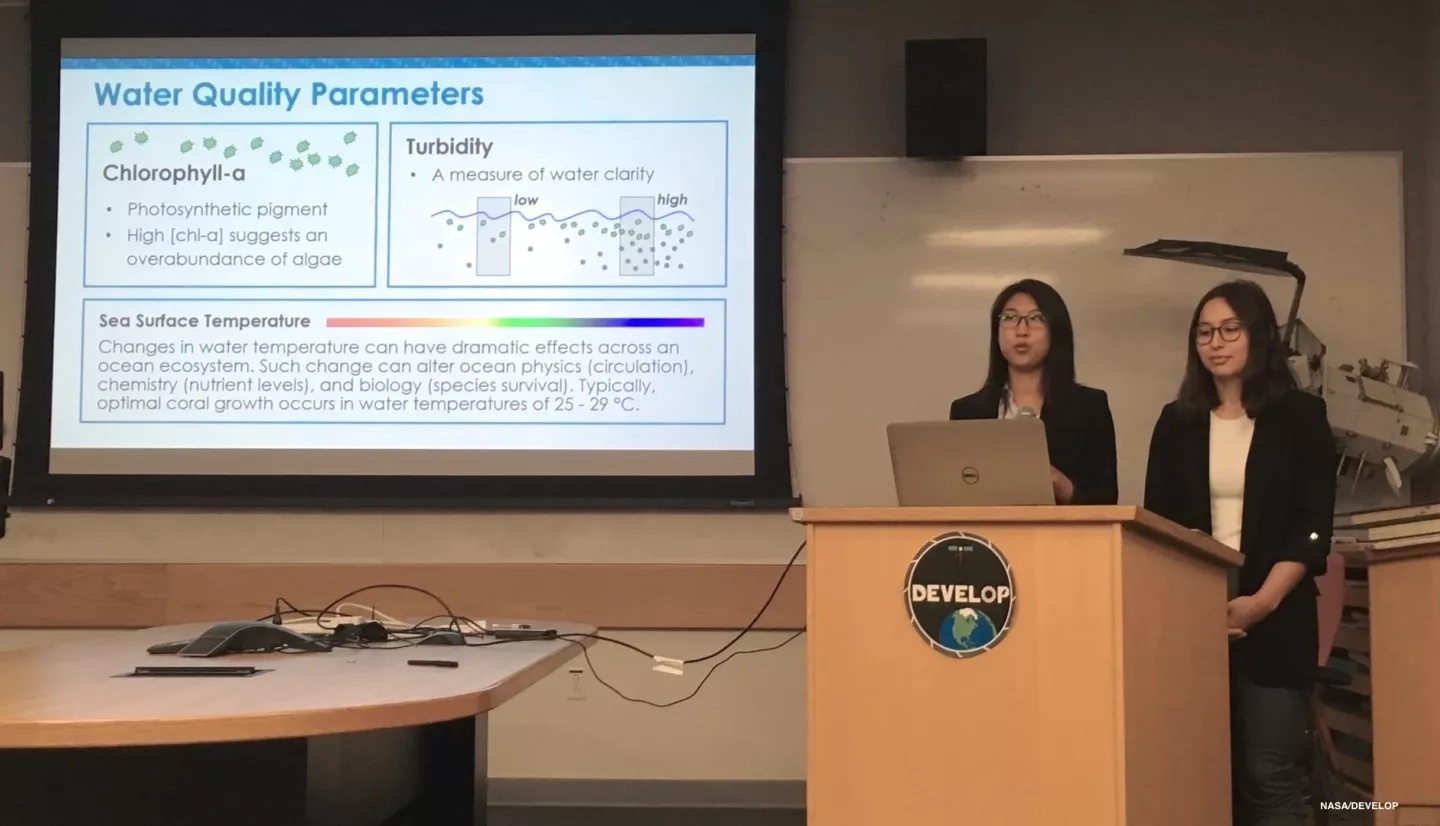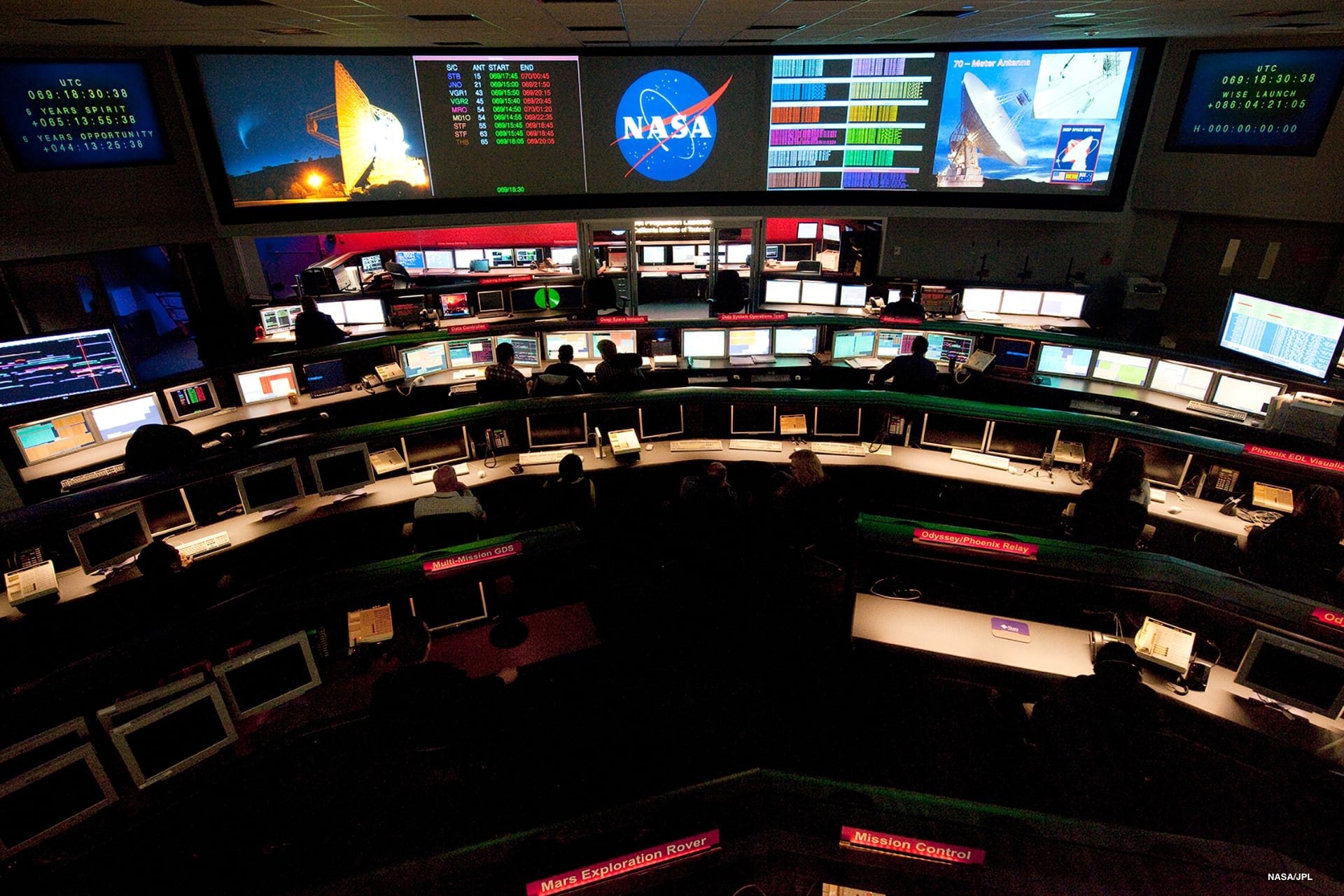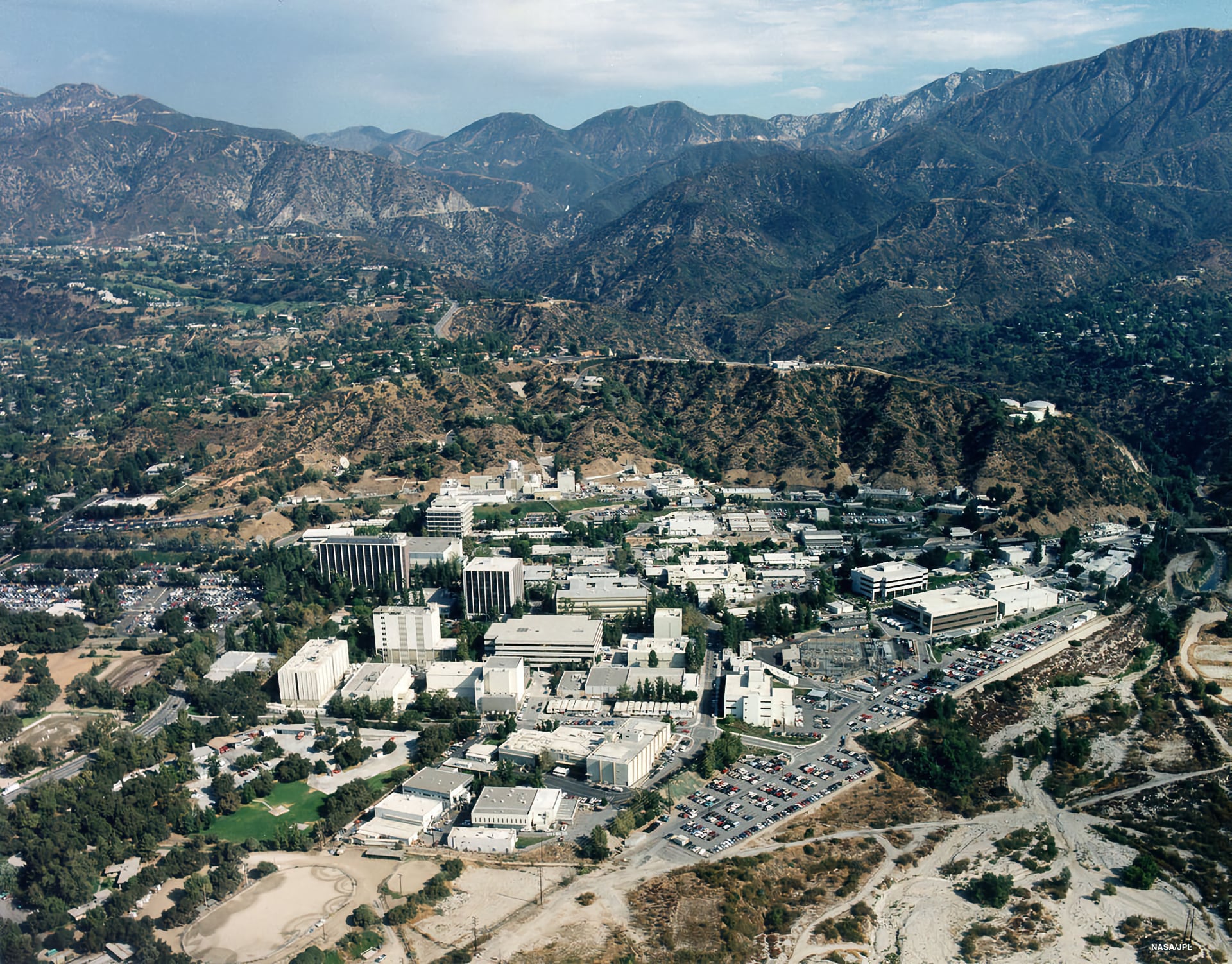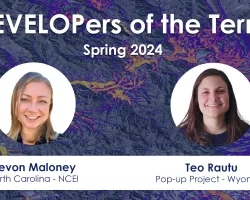It’s a little known fact that the “center of the universe” is located in the foothills of the San Gabriel Mountains in Southern California, in a building about 15 miles north of Downtown Los Angeles. Although the phrase etched in a plaque in the Space Flight Operations Facility may seem filled with hubris, it’s not too far off. NASA’s Jet Propulsion Laboratory (JPL) hosts the mission control room of the Deep Space Network, which supports many interplanetary spacecraft missions and a few that orbit Earth. With communications to spacecraft across the cosmos originating from that room, it makes sense to call it the center of the universe. JPL is world-famous for things like the construction and design of Mars rovers, but it also gives strong support for Earth science missions.
“...DEVELOP’s presence at JPL has grown into a well-known and respected program within the Earth science section...”
JPL’s NASA DEVELOP location first opened in the summer of 2008 with only one participant, led by an oceans scientist by the name of Benjamin Holt. Ben soon became DEVELOP JPL’s Lead Science Advisor, playing an essential role in both the development and execution of projects. Over the past 12 years, DEVELOP’s presence at JPL has grown into a well-known and respected program within the Earth science section, with around twenty-four participants and six projects per year.
Many of JPL’s DEVELOP projects revolve around issues faced by California. In the past, they’ve examined issues like forecasting future tree cover and analyzing the effects of wildfires on nearby ecosystems. During the spring 2020 term, one team took on a particularly daunting issue—groundwater depletion in California’s Central Valley.
The Central Valley Water Resources team used NASA Earth observations to look at changes in water storage in this critical agriculture hub as well as the subsequent subsidence, or sinking of the land, due to the overdraft of groundwater to feed crops. They quantified groundwater depletion and land subsidence over time, which project partners at the California Department of Water Resources will use to help critically overdrafted basins reach sustainable levels of groundwater depletion.
One unique feature of DEVELOP’s JPL location is the direct collaboration with NASA Earth observation mission scientists. JPL hosts some of the most brilliant remote sensing experts in the world, and many jump at the notion of advising teams on a DEVELOP project. Many NASA Earth observations come from JPL missions, including the Gravity Recovery and Climate Experiment (GRACE), used in the Central Valley Water Resources project mentioned above.
“JPL hosts some of the most brilliant remote sensing experts in the world, and many jump at the notion of advising teams on a DEVELOP project.”
In addition to analyzing terrestrial groundwater, past JPL DEVELOP projects have also examined issues like ocean water quality, wetland mapping, solar panel site suitability, and wildfire impacts. Many JPL projects use a technique called Synthetic Aperture Radar, or SAR. Because SAR sensors are frequently underutilized by organizations outside of NASA, JPL DEVELOP has a passion for conducting SAR studies to help partner organizations learn more about what lesser-known NASA Earth observations can achieve.
When taking a break from collaborating on DEVELOP projects, JPL participants have found a variety of interests and sights to see around the Lab and surrounding area. Past participants have enjoyed hiking the nearby trails, such as Angeles National Forest, or traveling to downtown Los Angeles.
No matter the project or application area, JPL DEVELOPers are always ready to take on complicated issues and leverage a myriad of resources available at JPL to truly make a difference.





